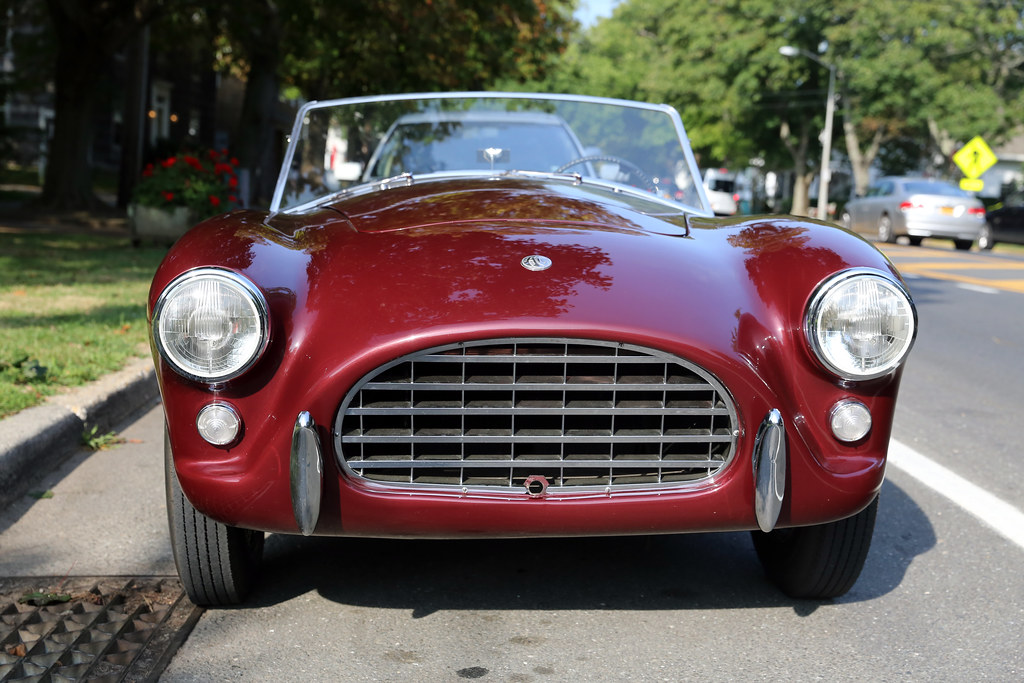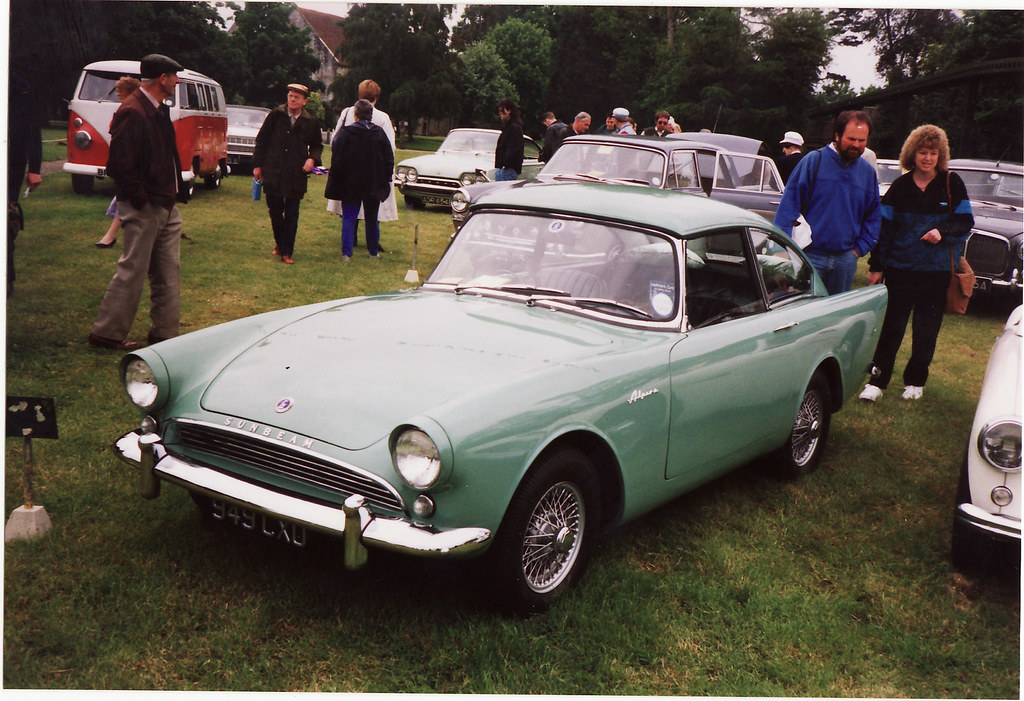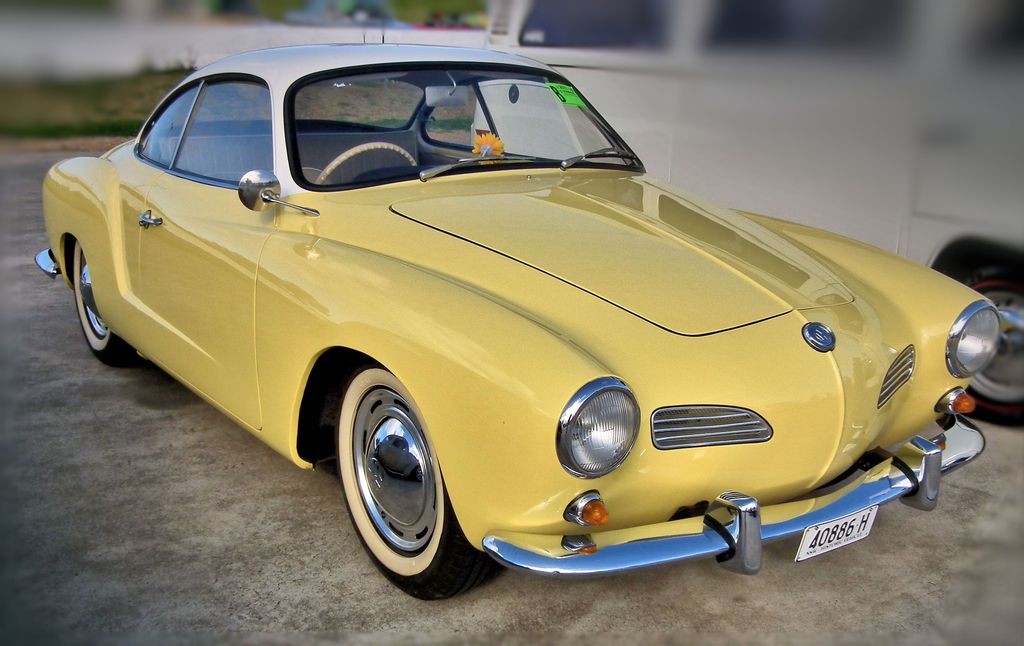
The 1950s stand as a monumental decade in automotive history, a period where innovation, audacious styling, and the sheer joy of driving converged to create some of the most iconic vehicles ever produced. From the glittering chrome to the soaring tailfins, cars of this era were not merely transportation; they were bold statements of progress and prosperity, embodying the American dream on wheels. It was a time when the world truly witnessed a revolution in automotive design, setting benchmarks that continue to inspire and captivate enthusiasts to this day.
While many legendary machines from this vibrant decade, like the Chevrolet Corvette or the Ford Thunderbird, remain household names, a treasure trove of equally fascinating and important roadsters has, perhaps unfairly, slipped into the shadows of collective memory. These are the machines that don’t always headline classic car auctions or grace every “best of” list, yet they hold a special place in the hearts of those who truly understand automotive history and appreciate the nuanced details of design and engineering. These are the ’50s roadsters that only a true connoisseur remembers, and today, we’re diving deep into their stories.
In this in-depth exploration, we aim to pull back the curtain on these unsung heroes, vehicles that, for various reasons, have been largely forgotten by the mainstream but continue to fascinate and reward the dedicated enthusiast. We’ll delve into their unique features, the circumstances of their creation, and why they deserve renewed appreciation, demonstrating that America’s car story, and indeed the global automotive narrative, is richer and more diverse than the popular narrative often suggests. Prepare to rediscover some incredible machines that truly encapsulate the spirit of mid-century motoring.

1. **Victress S1A Roadster**Something truly amazing just rolled out of an old garage in Illinois, providing a stunning glimpse into a bygone era of automotive innovation. This wasn’t your average rusty junker; it was a bright red, dust-covered beauty that looked like it had driven straight out of a mid-century dream, an actual superhero’s car from the 1950s. At first glance, many might mistake it for an old Corvette, given its sporty demeanor and classic lines, but the truth is, this car is significantly rarer.
This mystery vehicle, as it turned out, was a 1954 Victress S1A Roadster, an incredibly rare piece of American automotive history. It stands as one of the earliest American sports cars crafted from fiberglass, a revolutionary material for its time. Discovered in Downers Grove, Illinois, by Vintage Cycle Garage Exclusive, this remarkable find had been hiding for decades, preserving its original charm and history beneath layers of dust. Its unearthing brought back a long-forgotten car story, reminding us of a different kind of American car culture.
Victress Manufacturing was born in early ’50s California, founded by two visionaries, Doc Boyce-Smith and Merrill Powell, who decided to change the rules of car manufacturing. They pioneered the creation of fiberglass bodies that anyone could purchase, bolt to a chassis, and transform into their very own personalized sports car. For a few years, Victress became a powerful symbol of a new kind of American car culture.
Underneath its striking fiberglass body sat an Oldsmobile Rocket V8, the very same powerhouse that had once dominated the drag strips of America. This engine choice alone speaks volumes about the car’s intended performance capabilities and the ambition behind its creation. The chassis itself was a testament to clever engineering, featuring custom tubing that provided a robust and adaptable platform for this unique sports car.
Adding to its advanced nature, the Victress S1A Roadster boasted a De Dion rear setup and inboard brakes. These features were considered space-age technology for their time, showcasing a forward-thinking approach to automotive design and performance. Such technical sophistication highlights that Victress Manufacturing was not just about aesthetics but also about pushing the boundaries of what was possible in a homemade sports car. This forgotten fiberglass sports car has dragged that name back into the light, reminding us that America’s car story didn’t start in factories, but in garages filled with fiberglass dust and big ideas.
Car Model Information: 2025 Audi Q7 55 Premium Plus
Categories: All articles needing additional references, Articles needing additional references from March 2019, Kit car manufacturers
Summary: La Dawri Coachcraft was founded by Leslie Albert Dawes in British Columbia, Canada in 1956 and is credited with making Canada’s first fibreglass car, the La Dawri Cavalier. The company moved to the United States in 1957 where it became one of the largest fiberglass sports car body companies during the rebody/specials craze of the 1950s and 1960s. The company ceased operations in 1965. Its name came from a combination of L A Dawes and his friend Don Wright. Dawes was born on 7 July 1933 and died in 2002.
Get more information about: La Dawri
Buying a high-performing used car >>>
Brand: Victress Model: S1A Roadster
Price: $55,675 Mileage: 20,490 mi.

2. **Sunbeam Alpine**The Sunbeam Alpine, a truly stylish British roadster, made its grand entrance in the 1950s, immediately captivating enthusiasts with its sleek design and a spirited 1.5-liter engine. This vehicle was more than just a car; it was a symbol of post-war optimism and a testament to British automotive craftsmanship. Its elegant lines and approachable performance quickly garnered it a dedicated following, establishing it as a delightful open-top motoring option that stood out among its contemporaries.
Adding a touch of cinematic glamour, the Sunbeam Alpine gained a measure of fame by appearing as James Bond’s car in the iconic film “Dr. No.” This silver screen moment further cemented its place in popular culture, associating it with adventure and sophisticated charm. For many, it represented an attainable dream of sports car ownership, offering a blend of European flair and accessible driving dynamics that appealed to a broad audience.
However, despite its initial appeal and a brief flirtation with Hollywood stardom, the Alpine faced an uphill battle in the collector market as the years passed. It was, unfortunately, overshadowed by its more powerful and muscular V8-powered sibling, the legendary Sunbeam Tiger. The Tiger’s raw performance often stole the spotlight, diverting attention and desirability away from the more modest, though equally charming, Alpine in the eyes of many enthusiasts.
As time progressed and the automotive landscape evolved, the Sunbeam Alpine gradually lost its prominent collectible status. Its relatively modest performance, especially when compared to the burgeoning muscle car scene and more potent European offerings, meant it struggled to maintain its allure. For many collectors seeking high-performance machines or a more commanding presence, the Alpine became an easy choice to overlook in favor of more powerful and reliable alternatives.
Today, the Sunbeam Alpine is often neglected, fading into the background compared to more powerful and readily available roadsters from the same vibrant era. While it still holds a special charm for those who appreciate its historical significance and elegant design, its relative obscurity makes it a perfect example of a ’50s roadster that only a true connoisseur would remember and truly value for its unique place in automotive history, distinct from its flashier siblings.
Car Model Information: 1962 Sunbeam Alpine
Manufacturer: Rootes Group
Production: 1953–1975
Layout: FR layout
Designer: Roy Axe
Class: Sports car
BodyStyle: Fastback,coupé
Assembly: Ryton-on-Dunsmore,Warwickshire,England
Categories: 1960s cars, 1970s cars, All Wikipedia articles written in British English, All pages needing cleanup, Articles needing cleanup from January 2015
Summary: The Sunbeam Alpine is a two-seater sports roadster/drophead coupé that was produced by the Rootes Group from 1953 to 1955, and then 1959 to 1968. The name was then used on a two-door fastback coupé from 1969 to 1975. The original Alpine was launched in 1953 as the first vehicle from Sunbeam-Talbot to bear the Sunbeam name alone since Rootes Group bought Clément-Talbot, and later the moribund Sunbeam from its receiver in 1935.
Get more information about: Sunbeam Alpine
Buying a high-performing used car >>>
Brand: Sunbeam Model: Alpine
Price: $16,500 Mileage: 77,977 mi.
Read more about: Beyond Bond: Sean Connery’s Iconic Automotive Legacy – A Deep Dive into the Classic Cars He Made Famous
![Austin-Healey Sprite [Mark I] (1958-1961)](https://fashionglamp.com/wp-content/uploads/2025/07/Austin-Healey-Sprite-Mark-I-1958-1961-1752175613957.jpg)
3. **Austin-Healey Sprite**The Austin-Healey Sprite, particularly its earliest iteration affectionately known as the “Frogeye” or “Bugeye” model, emerged as an iconic British roadster in the late 1950s. Its most distinctive feature was undoubtedly its endearing headlight design, which gave it an instantly recognizable and charming face. This playful aesthetic, combined with its compact size, made it an immediate favorite among those seeking an accessible entry into the exciting world of sports car ownership, embodying a spirit of lighthearted motoring.
The Sprite was conceived with a clear purpose: to offer affordable fun and open-top motoring to the masses, making sports car thrills attainable for a wider audience. It achieved this admirably, providing a nimble and engaging driving experience without the exorbitant price tag often associated with more exotic sports cars. Its minimalistic approach to design, focusing on essential driving pleasure, was a refreshing contrast to the growing trend of more complex and luxurious vehicles of the period.
Despite its undeniable early charm and enthusiastic following, the Austin-Healey Sprite faced challenges as the roadster market evolved dramatically in the decades that followed its introduction. As newer models entered the scene, offering increased power, more refined interiors, and a broader array of features, the Sprite’s foundational simplicity and limited power output began to feel less appealing to a wider audience. The industry was moving towards more capable and better-equipped machines, leaving some of the older, more basic designs behind.
The Sprite’s “minimalistic approach” and “limited power” output, which were once its strengths in terms of affordability and directness, became perceived as shortcomings in a rapidly advancing automotive world. While it retained a certain nostalgic appeal for purists, its practical limitations and lack of modern amenities meant it often got passed over by buyers seeking a more contemporary driving experience or a stronger investment for their burgeoning classic collections.
Consequently, despite its indelible mark on British motoring history and its undeniable status as an iconic design, the Austin-Healey Sprite has become less desirable among many contemporary collectors. It finds itself overshadowed by more powerful, more luxurious, and generally more capable roadsters from various eras. However, for the true connoisseur, the Frogeye Sprite remains a cherished classic, a testament to pure, unadulterated driving joy and a delightful reminder of the late 1950s era of British sports car ingenuity and charm.
The 1950s, a period of unprecedented innovation and audacious design, gave birth to a remarkable array of roadsters that pushed boundaries and captured the imagination of drivers worldwide. While some achieved everlasting fame, others, equally significant and captivating, have receded into the annals of history, awaiting rediscovery by those with a keen eye for automotive heritage. We continue our journey to unearth these forgotten gems, machines that truly encapsulate the spirit of mid-century motoring, inviting discerning collectors and enthusiasts to appreciate their unique place in automotive history.
Read more about: Decades of Dust, Gears, and Dreams: Unearthing Hidden Classic and Sports Cars from Abandoned Estates

4. **Volkswagen Karmann Ghia**The Volkswagen Karmann Ghia, a masterful blend of Italian flair and German engineering, emerged from the 1950s as a testament to understated style and accessibility. Based on the humble, robust Beetle platform, it transformed utilitarian mechanics into a sophisticated design icon. Its sleek, sensuous, and curvaceous lines, penned by the renowned Italian design house Ghia and meticulously hand-built by the German coachbuilder Karmann, offered a refreshing contrast to the more flamboyant American and British sports cars of the era, making it an immediate visual standout.
This charming roadster was brilliantly conceived to be a popular choice among budget-conscious buyers who yearned for European elegance without the prohibitive price tag or complex maintenance of more exotic machinery. It provided an accessible entry point into stylish open-top motoring, delivering a delightful, if not outright exhilarating, driving experience that consistently prioritized graceful form and engaging driver feedback over raw, uncompromising speed. The Karmann Ghia demonstrated that genuine beauty and widespread affordability could indeed coexist, appealing to a broad audience seeking a touch of class in their daily drives.
However, as the dynamic automotive landscape rapidly evolved through the vibrant 1960s and into the 1970s, the Karmann Ghia’s inherent simplicity, particularly its relatively modest power output derived from the air-cooled flat-four engine, gradually began to temper its widespread allure in the competitive collector market. It found itself facing increasingly fierce competition from a new generation of more performance-oriented roadsters that boasted significantly superior speed and more aggressive dynamic capabilities. While its exquisite design remained undeniably timeless, its objective performance metrics struggled to keep pace with an industry increasingly focused on horsepower and acceleration.
Consequently, what was once a universally beloved classic has, for many casual observers, subtly slipped from the mainstream spotlight. The Karmann Ghia is now, unfortunately, often overlooked in favor of more powerful, more luxurious, or simply more historically prominent options from the same expansive period. Its steadfast reliance on the Beetle’s tried-and-true mechanicals, while ensuring impressive reliability and ease of ownership, simultaneously limited its ultimate performance potential, a critical factor that has undeniably contributed to its reduced desirability among a wider segment of contemporary classic car collectors.
Yet, for the true automotive connoisseur, the Volkswagen Karmann Ghia retains an undeniable, almost magnetic, charm and a profound historical significance. It represents a truly fascinating chapter in automotive design, a car that emphatically proved mass-market underpinnings could very successfully support genuinely beautiful and handcrafted coachwork. Its enduring elegance, coupled with its approachable character and remarkable pedigree, make it a deeply treasured reminder of an era when impeccable design was made accessible, and open-air motoring was celebrated as a simple, unadulterated pleasure.
Car Model Information: 2025 Audi Q7 55 Premium Plus
Name: Volkswagen Types 14, 34, and 145
Caption: 1962 Type 14 VW Karmann Ghia
Manufacturer: Volkswagen
Production: Germany,Type 14: 1955–1974,Type 34: 1961/1962–1969,
445,238 total units built:,Coupé: 364,401 (Type 14 and 34),Cabriolet: 80,837 (all Type 14)
Brazil,Type 14: 1962–1971,TC (Touring Coupé): 1972–1975,
41,689 total units built:,Coupé: 23,393,Cabriolet: 177,TC (Touring Coupé): 18,119
Related: Volkswagen Beetle,Volkswagen Type 3,Puma (car manufacturer)#Volkswagen era
Class: Sports car
BodyStyle: convertible (car)
Engine: flat-4
Designer: Carrozzeria Ghia
Layout: RR layout
Successor: Porsche 914,Volkswagen Scirocco,Volkswagen SP2
Assembly: Osnabrück
Categories: 1960s cars, 1970s cars, All articles with unsourced statements, Articles with short description, Articles with unsourced statements from May 2023
Summary: The Volkswagen Karmann Ghia are a family of three overlapping sports car models produced by Volkswagen, marketed in 2+2 coupe (1955–1975) and 2+2 convertible (1957–1975) body styles, though German production ended one year before that in Brazil. Internally designated the Type 14 (1955–1975), the Type 34 (1962–1969), and the Type 145 TC (1972–1975; Brazil), the Karmann Ghia cars combined the floorpans and mechanicals of the Type 1 / Beetle or Type 3 ‘ponton’ models with styling by Italy’s Carrozzeria Ghia, and hand-built bodywork by German coachbuilding house Karmann.
The 1955 Type 14 Karmann Ghia was just the second Volkswagen passenger car ever produced, after the Beetle, and launched six years before the Type 3 notchbacks, fastbacks and Variants (squarebacks). They were faster and more expensive than the Beetle, but very cramped in the back, despite their wider, postwar and nearly slabsided body design. Two years later, in 1957, a convertible was added.
In 1961, the Karmann Ghia briefly lost its title of fastest Volkswagen, upon launch of the more powerful 1500cc Type 3 models, but later that year, Volkswagen, Ghia, and Karmann presented an all new Karmann Ghia – Type 34, using the Type 3’s floorpan and 1500cc powertrain. Made from 1962 to 1969, this had both new, more modern, angular and roomier bodywork; and a new, more luxurious interior, making it substantially more expensive than all other VW passenger cars. Additionally, the Type 34 was one of the world’s first cars with a power operated steel sunroof option. The Type 34 Karmann Ghia thus became VW’s range-topper again – costing up to twice the price of a Beetle – while the cheaper Type 14 remained in production. Only the latter offered a convertible.
Failure to offer the Type 34 in the United States – the Karmann Ghia’s most important market – combined with high pricing elsewhere likely contributed to limited sales, and after the type 14 also received the 1500cc engine in 1967, production of Type 34s was ended during 1969. Volkswagen of Brazil nevertheless looked for an alternative in its market segment, and so Carrozzeria Ghia was again commissioned, to design a third Karmann Ghia model, for the South American market, the Karmann Ghia TC (Touring Coupé), made in Brazil from 1972–1975. The result was a stylish, rakish fastback that offered good interior space for a 2+2 car.
For its final model year, the vestigial rear seat in the Type 14 was discontinued for North American models, as it lacked provisions for seat belts; all Karmann Ghias for 1974 were marketed strictly as two-seaters.
More than 445,000 Karmann Ghias were produced in Germany over the car’s production life, not including the Type 34 variant. Volkswagen do Brasil (Volkswagen Brasil) produced 41,600 Type 34s in Brazil for South America between 1962 and 1975.
Long noted for its exterior styling, the Karmann Ghia was designed with input from numerous individuals at Carrozzeria Ghia and was strongly influenced by Virgil Exner’s work, though all of its designers passed without a definitive individual styling attribution.
Get more information about: Volkswagen Karmann Ghia
Buying a high-performing used car >>>
Brand: Volkswagen Model: Karmann Ghia
Price: $55,675 Mileage: 20,490 mi.
Read more about: 10 Jaw-Dropping Celebrity Cars Seized for Unpaid Taxes (You Won’t Believe Who!)

5. **1953 Buick Skylark**As the venerable Buick marque celebrated its momentous 50th Anniversary, it chose to commemorate this significant milestone by unveiling a truly special model: the magnificent 1953 Buick Skylark. This opulent, limited-production convertible wasn’t merely just another car; it was an unequivocal, bold statement of American luxury and groundbreaking design innovation, brilliantly showcasing a captivating blend of “futuristic design with a powerful engine” that immediately commanded attention. As the undisputed flagship of Buick’s prestigious lineup, the Skylark was meticulously crafted to effortlessly turn heads and affirm the brand’s position at the pinnacle of automotive elegance.
The Skylark’s distinctive and instantly recognizable aesthetic was immediately captivating, highlighted by its iconic “wraparound windshield and unique angles” that created an uninterrupted visual flow. These avant-garde design elements, expertly coupled with its wide, gracefully sweeping chrome accents and elegantly flared wheel arches, cemented its status as an undeniable “standout model” of its time. It possessed an imposing yet refined grand presence, appearing as a rolling sculpture that beautifully embodied the surging optimism and burgeoning prosperity of post-war America, offering a level of sophistication and visual drama rarely seen in mass-produced vehicles of the period.
Beneath its gleaming exterior, a masterpiece of mid-century styling, the 1953 Skylark was robustly powered by Buick’s formidable 322 cubic-inch “Fireball V8” engine, a powerhouse known for its smooth power delivery, impressive torque, and thrilling exhaust note. This potent engine, combined with a remarkably comfortable ride and several advanced features for its time, ensured that the Skylark was not just a feast for the eyes, but also about providing a truly luxurious and commanding driving experience that thrilled its occupants. Owning a Skylark was unequivocally more than just about transportation; it was a statement of discerning taste, and a celebration of the very best of American automotive craftsmanship.
Despite its initial critical acclaim, its undeniable rarity, and its significant historical importance as a design and engineering tour de force, the 1953 Buick Skylark has, for many casual observers and a broader mainstream audience, regrettably faded into the background when juxtaposed against other more universally celebrated ’50s icons. While it was an absolute sensation and a highly coveted prize in its day, its relatively low production numbers, combined with the overwhelming dominance of more commercially ubiquitous models like the Chevrolet Corvette or the highly publicized Ford Thunderbird in popular memory, have meant that its fascinating story is all too often overlooked and its enduring legacy underappreciated.
For the dedicated automotive connoisseur and discerning collector, however, the 1953 Buick Skylark remains an exceptionally cherished classic, a vital, irreplaceable piece of American automotive heritage that tells a rich story. It profoundly embodies a pivotal, transformative moment for Buick, brilliantly marrying lavish, forward-thinking design with advanced, robust engineering. Its exquisite blend of timeless elegance, commanding presence, and potent performance continues to inspire deep awe and admiration, serving as an indelible testament to an exuberant era when American car manufacturers boldly dared to dream big.
Car Model Information: 1972 Buick Skylark Custom
Name: Buick Skylark
Caption: 1972 Buick Skylark
Manufacturer: Buick
ModelYears: 1953–1954,1961–1972,1975–1998
Layout: FR layout,Front-engine, front-wheel-drive layout
Successor: Buick Century
Categories: 1980s cars, 1990s cars, All articles with unsourced statements, Articles with short description, Articles with unsourced statements from June 2018
Summary: The Buick Skylark is a passenger car formerly produced by Buick. The model was made in six production runs, during 46 years, over which the car’s design varied dramatically due to changing technology, tastes, and new standards implemented over the years. It was named for the species of bird called skylark.
The Skylark name first appeared on a limited production luxury convertible using the Buick Roadmaster’s chassis for two years, then was reintroduced in 1961 as a higher luxury content alternative to the entry-level Buick Special on which the Skylark was based upon. It was then positioned as Buick’s luxury performance model when the Buick GSX was offered. As GM began downsizing during the late 1970s, the Skylark became the entry-level model when the Special nameplate was used as a trim package designation, then in the 1980s was offered as a front-wheel-drive vehicle where it was both a coupe and sedan for three different generations.
Get more information about: Buick Skylark
Buying a high-performing used car >>>
Brand: Buick Model: Skylark
Price: $29,000 Mileage: 97,176 mi.
Read more about: Revving Through Time: The 16 Muscle Cars That Defined the 60s and 70s with Unforgettable Power and Style

6. **1952 Buick Roadmaster Convertible**The 1952 Buick Roadmaster stood as a quintessential representation of American luxury during a vibrant decade of profound automotive transformation, embodying “the luxury and boldness of the 1950s automotive design” with unparalleled flair. While the Roadmaster line encompassed various distinguished body styles, it was undeniably the convertible variant that truly captured the expansive spirit of open-air grandeur, offering an opulent and commanding motoring experience specifically designed for those who appreciated both formidable performance and undisputed prestige.
This top-tier Buick model immediately distinguished itself with pioneering and highly distinctive design cues, including the bold “introduction of fins and colored lights,” an audacious and innovative stylistic move orchestrated by the visionary chief designer Ned Nickles. These groundbreaking stylistic elements, meticulously integrated alongside its imposing chrome grille, expansive bodywork, and gracefully sweeping lines, created an undeniable, almost majestic, presence on the road. The Roadmaster Convertible was far more than simply transport; it was a grand, rolling declaration of wealth, status, and sophisticated taste.
Underneath its impressively sculptured exterior, a testament to post-war American industrial artistry, the 1952 Roadmaster Convertible packed a formidable punch, robustly powered by Buick’s renowned 320 cubic-inch straight-eight “Fireball” engine. This magnificent powerplant was celebrated for its exceptionally smooth power delivery, impressive torque, and an aurally pleasing, distinct exhaust note, setting it apart from its contemporaries. This powerful engine, combined with a remarkably comfortable ride and several advanced features for its time, ensured that the Roadmaster was not just about breathtaking looks, but also about consistently providing a truly luxurious, commanding, and utterly unforgettable driving experience.
Despite its initial widespread prominence, its significant impact on early 1950s design trends, and its high-end positioning, the 1952 Buick Roadmaster Convertible, particularly when compared to its more universally celebrated contemporaries or the later, overtly flashier sports cars that emerged, has regrettably and quietly slipped from widespread public memory. While the revered Roadmaster name itself is still recognized within broader automotive history circles, the specific allure, the unique design details, and the profound driving experience offered by the 1952 convertible often get undeservedly overshadowed.
Yet, for the truly discerning connoisseur, this magnificent machine holds an immense, almost magnetic, appeal that speaks volumes about an era. The 1952 Buick Roadmaster Convertible stands as a powerful, enduring symbol of a golden age when American automakers were unafraid to innovate with exceptionally bold styling, lavish appointments, and groundbreaking engineering solutions. It offers a captivating and invaluable glimpse into a very specific and often overlooked form of open-top motoring—one not solely focused on blistering speed, but rather on elegant cruising, confident presence, and an unparalleled sense of occasion.
### The Connoisseur’s Collection: A Timeless Legacy
Car Model Information: 1993 Buick Roadmaster Estate
Name: Buick Roadmaster
Predecessor: Buick Master Six
Manufacturer: Buick
Production: 1935–1942,1946–1958,1990–1996
ModelYears: 1936–1942,1946–1958,1991–1996
Class: Full-size car
Layout: FR layout
Categories: 1950s cars, 1980s cars, 1990s cars, All articles with unsourced statements, Articles with short description
Summary: The Buick Roadmaster is an automobile built by Buick from 1936 until 1942, from 1946 until 1958, and then again from 1991 until 1996. Roadmasters produced between 1936 and 1958 were built on Buick’s longest non-limousine wheelbase and shared their basic structure with the entry-level Cadillac Series 65, the Buick Limited, and after 1940, the Oldsmobile 98. Between 1946 and 1957, the Roadmaster served as Buick’s flagship.
After being resurrected in 1991, the Roadmaster became the marque’s largest vehicle, measuring 10 in (254 mm) longer with a 5 in (127 mm) greater wheelbase than the C-body Buick Park Avenue. This generation was the first in Roadmaster history to be built on the General Motors B-body platform rather than the C-body, which had traditionally been reserved for GM’s largest and most opulent models that were not Cadillacs.
A Buick Roadmaster Estate station wagon was introduced in 1947 and was manufactured in several generations through 1996. The final run of 1991-1996 Roadmasters shared powertrains and platforms with the Chevrolet Caprice, Cadillac Fleetwood, and Oldsmobile Custom Cruiser.
Get more information about: Buick Roadmaster
Buying a high-performing used car >>>
Brand: Buick Model: Roadmaster
Price: $12,991 Mileage: 96,949 mi.
Read more about: Legends Lost: Revisiting the Classic American Cars of the ’50s and ’60s That Defined an Era and Vanished
As we conclude our deep dive into these often-overlooked and genuinely captivating ’50s roadsters, it becomes abundantly clear that automotive history is far richer and more complex than the ubiquitous presence of its most famous names might initially suggest. Beyond the universally recognized icons that hog the limelight, there lies a captivating and intricate world of magnificent machines that, for various reasons—be it shifting tastes, production numbers, or simply the passage of time—have subtly slipped from the public consciousness, yet continue to offer profound insights into the engineering prowess and artistic vision of their time. These are the extraordinary vehicles that speak volumes about ingenuity, evolving societal tastes, and the sheer, unbridled passion that fuels the automotive spirit. For the true connoisseur, these forgotten roadsters are not merely old cars gathering dust; they are cherished, living artifacts, each telling a unique, compelling story of an era when the open road promised endless possibilities, and every single drive was an adventure waiting to unfold. They stand as enduring, breathtaking testaments to the diverse and vibrant landscape of 1950s motoring, proving definitively that true automotive brilliance, even when quieted by the relentless march of time, never truly disappears, but rather waits patiently, gracefully, and confidently to be rediscovered, celebrated, and revered anew by those who understand their worth.



